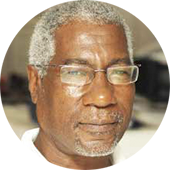
WITH the official celebration of the 70th Anniversary of the People’s Republic of China (PRC) on October 1, deserved tributes will flow from every corner of the world, acknowledging highlights of its distant past, bright present and visible prospects for an even brighter future for a country with a long and rich history in traditional arts, medicine and astrology, whose explorers first drew a map of the world — and reached The Americas in the 15th Century, 70 years before Columbus.
The PRC has stood the test of time, always converting challenges into opportunities, attracting both admiration and envy for its ongoing achievements in all spheres of human endeavour.
China’s history may be long and complicated, but its strides since 1949 today command worldwide respect.
The PRC has no hegemonic ambitions or colonies, has not dotted the world map with military bases for geopolitical advantages and doesn’t invade nations. Instead, while ensuring China’s defense capabilities can match all challenges at all times, it’s policies have also ensured the country continues leading in world scientific and technological innovation, remains in active pursuit of peaceful development of space and openness in cyberspace, maintains world peace, builds highways for global trade — and remains the world’s main factory.
In four short decades, the PRC scored astronomical accomplishments in varied spheres ranging from construction and industry to artificial intelligence and technological innovation, as well as human and social development, while taking its rightful positions on crucial global matters in manners consistent with its national objectives — and harmless to others.
The PRC is today an admirable global model of gubernatorial consistency achieved over successive decades of advanced central planning and absolute guarantees of continuity in implementation.
From the opium and tea wars of yesteryear to today’s trade wars, China has survived every challenge in its long, onward march through time, overcoming every impediment, always letting its past be the guide to its future – and the PRC keeping the interests of its people always at front and center.
China today is light years ahead of the 19th Century battles for its products and control of parts of its territory: The old Silk Road has returned through the land and sea routes of the Belt and Road Initiative (BRI) and the PRC is today’s undisputed leader in 5G technology. It leads by example in South-South Cooperation and Poverty Reduction; and as the world’s second largest economy, it’s an essential engine of world trade. Its transport and communications achievements — especially in airport and aircraft development and high-speed rail — are simply remarkable, if not incomparable. Chinese tourists are welcomed and sought the world over. Chinese students continue to carve their places in top-notch foreign universities. And Chinese scientists are in demand worldwide.
But it hasn’t always been a smooth ride.
The PRC’s visionary approaches to long-term solutions for critical national problems often led to early criticism later replaced with overdue praise. Example: Its efforts at population control through adoption of a One Child policy in the 1980s was largely criticized. But two decades later it was largely applauded by the international community.
Its unflinching One China policy — accepted by the international community since 1971 – continues to be criticized by a loud minority of nations. But it returned Hong Kong to the path of reunification in 1997.
Twenty-seven years after the 1992 Consensus, the PRC maintains that both sides of the Taiwan Strait belong to One China, even while Washington continues trying to turn Taiwan into a launching pad for expanding US geopolitical and military influences in Asia.
Through decades of raw Cold War anti-communism, protracted geopolitical warfare and territorial interference, there’s been a relentless pursuit of efforts to engineer its economic downfall. But the PRC has so stewarded its economic affairs in modern times as to both survive the combined hostility of global imperial capital and develop fruitful win-win ties with nations of the world, big and small.
Another example: China’s ties with Africa today stand out. Unlike the centuries of sustained resource exploitation by Western powers, after only three decades of ties China is today helping the continent extract its resources, while also rapidly building infrastructure and strengthening communications.
Leading all the PRC’s progress — before and since 1949 — has been the Communist Party of China (CPC), also leading the onward march to the next optimal stage of the nation’s continuing development: Construction of ‘Socialism with Chinese Characteristics’.
The vanguard role of the CPC — from Mao to Xi — has been the most important factor in the PRC’s successes; and following celebrations of PRC@70, the focus will naturally shift to the fruits of its longevity — and its upcoming centenary in 2021.
The CPC centennial will then metamorphose into China’s next inevitable long march: the PRC’s centennial in 2049 — and the ultimate placement of yet another jewel in the People’s Republic’s crown of accomplishments, yet again sealing the everlasting bond between the world’s biggest political party and the people it has faithfully represented for 98 years!












